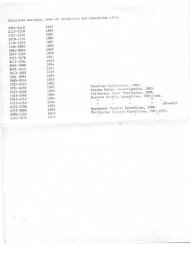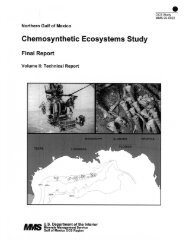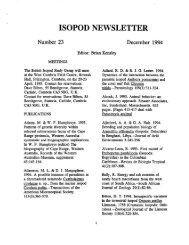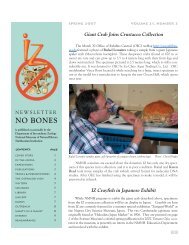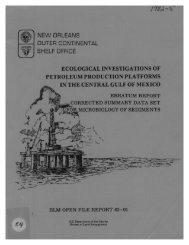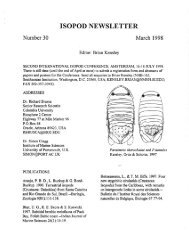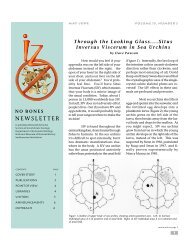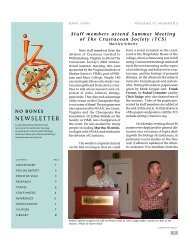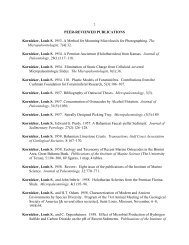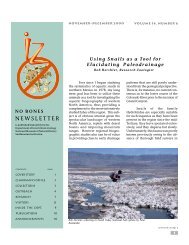Executive Summary - Department of Invertebrate Zoology
Executive Summary - Department of Invertebrate Zoology
Executive Summary - Department of Invertebrate Zoology
You also want an ePaper? Increase the reach of your titles
YUMPU automatically turns print PDFs into web optimized ePapers that Google loves.
and epifauna . The investigators associated with the zooplankton and<br />
physical oceanographic and meteorological aspects <strong>of</strong> the Norfolk<br />
Canyon Study are program element principal investigators for the<br />
comparable element in the BLM benchmark study .<br />
BLM Pers onnel<br />
Contract monitoring personnel within BLM recpoasible for these<br />
studies were Contracting Officers Authorized Representatives - Drs . J .<br />
Snyder and A . Horowitz and Mr . P . Thomas ; and Contracting Officers -<br />
Mssrs . W . Hamm, F . Galinsky, A . Guida, and P . Lubetkin . LiAison with<br />
the Branch <strong>of</strong> Environmental Studies, BLM, was the resFonsib'_l+ty <strong>of</strong><br />
Dr . R. Beauchamp and Mr . J . Cimato .<br />
The Study Area and Study Plan<br />
The region studied during the benchmark program covers an area <strong>of</strong><br />
over 13,000 square nautical miles, or about 45,000 km2, extending <strong>of</strong>f<br />
New Jersey, Delaware, Maryland, and Virginia over the broad<br />
continental shelf and upper slope (Figure 2) . Sampling had to be<br />
extensive enough tu characterize this expansive environment and also<br />
intensive enough to characterize the diversity <strong>of</strong> environments within<br />
regions <strong>of</strong> this topographically complex continental shelf . General<br />
requirements <strong>of</strong> the sampling scheme, including number <strong>of</strong> stations,<br />
were set forth by BLM in the contract ; VIMS was responsible for<br />
selection <strong>of</strong> the actual location <strong>of</strong> stations in consultation with USGS<br />
and `sLM .<br />
1975-1°i 6 Sampling Year<br />
Tn order to provide both the extensive coverage required <strong>of</strong> the<br />
area i-nrier consideration for lea3ing and tha intensive coverage<br />
desired .n the portion <strong>of</strong> the lease area <strong>of</strong> most interest to industry,<br />
51 benthic stations (A's through L's, Figure 2) were allocated as<br />
followb :<br />
- 24 stations (A's through F's), grouped in 6 clusters, each<br />
containing 4 stations, primarily concentrated in the outer<br />
shelf area but extending into central and inner shelf areas<br />
were located in a corridor bounded roughly by 38 .5°N and<br />
39 .5°N .<br />
-- A 7 station transect (G series) positioned r .ear the northern<br />
border (40°N) <strong>of</strong> the lease area .<br />
-- A 6 station t-ansect (K series) positioned along the southern<br />
border (38°N) <strong>of</strong> the lease area .<br />
10



